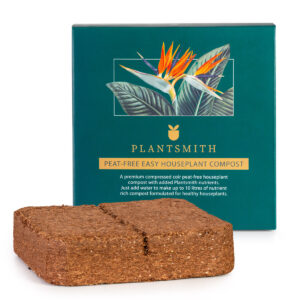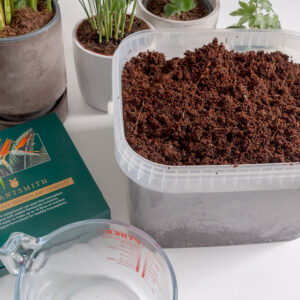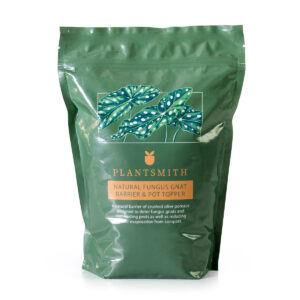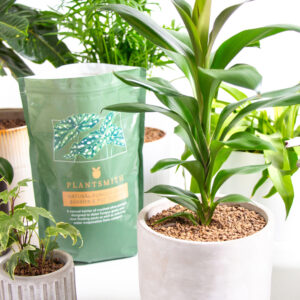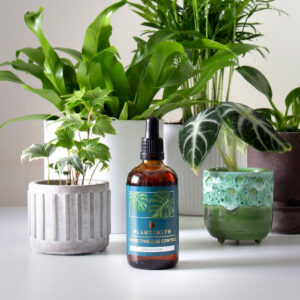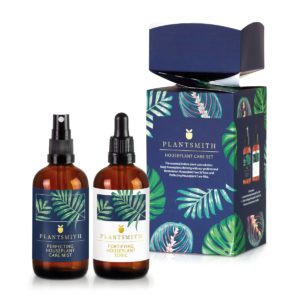Native to Central and South America Dieffenbachia, dumb canes or leopard lilies, have large oval leaves famed for their patterned dark-edged foliage flecked with cream and lime green.
If you are looking for a super easy houseplant for your home then Dieffenbachia could be it; these low maintenance plants require very little attention and will thrive in the right conditions. Get the location right and they practically look after themselves.
These attractive houseplants have a bizarre special feature, if eaten they can render humans temporarily mute hence the name dumb cane. Their cells contain raphides which are needle-shaped crystals of calcium oxalate which cause burning and pain in the mouth if ingested. Plants use this as a defensive mechanism to protect against animals eating them so keep your plant out of the way of curious pets or small children.
Light
Dieffenbachia, like many houseplants, naturally reside in the understory of rainforests and crave bright, diffused light. A light east or west facing window or bathroom is ideal. Keep your plant growing upright by regularly turning the pot so all sides get equal light rather than the plant leaning to one side.
Your plant will tell you if it is receiving too much light as their leaves will turn yellow or white, bleaching out the sought-after green variegations. If this happens move your houseplant to a more appropriate spot in your home that gets bathed in natural light but is situated away from sunny south-facing windows.

Water
Dumb canes favour moist soil but do not like being constantly saturated so wait until the top inch of soil is dry between waterings with a view to water every week or two from spring to summer. Adjust your watering schedule accordingly if your plant is drying out quickly or holding its moisture. Ideally leave a can of rainwater inside your house to warm up to room temperature; water straight from the butt can be cold and shock roots.
Coming from tropical origins Dieffenbachia love humidity which can sometimes be hard to achieve in our urban homes so mist regularly between waterings or place in a steamy bathroom or kitchen.
Foliage can be sprayed with rainwater or give your houseplant an extra boost by applying nutrients as well as humidity with Plantsmith’s Perfecting Houseplant Care Mist. This vegan and cruelty free product contains 17 essential plant-boosting nutrients which helps maintain houseplant health and resilience against pests and diseases. Misting temporarily increases the humidity surrounding your plant, compensating for our home’s dry air. Be aware, houseplants will need more misting in hot weather.
Temperature
Dieffenbachia naturally live in tropical climes so love warm conditions, thriving between 18-24°C (65-75°F). Just steer them clear of draughts and fluctuating temperatures from radiators and they should grow well.

Feeding
Feed dumb canes every two to four weeks throughout March to September. Use Plantsmith’s Fortifying Houseplant Feed; this houseplant specific feed has been especially formulated to contain a balance of 13 essential nutrients and minerals to aid growth, improve plant health and promote glossy leaves.
To apply shake the bottle then add 5 ml (approx. 4 pumps from 500ml bottle) or dilute two full pipettes from the 100ml bottle per litre of tepid rainwater; mix then water the soil. Potassium, iron, magnesium, kelp and essential micro and macro nutrients will encourage strong growth.
Be careful not to over fertilise houseplants as this can have the opposite effect and damage plants; over time mineral salts can build up and can burn roots but by sparingly using a balanced houseplant food you can help keep houseplants healthy and reduce the risk of succumbing to pests and diseases.
Soil
Dieffenbachia needs free-draining substrate so use a ready-made houseplant compost like Plantsmith’s peat-free coconut coir compost, this dedicated houseplant compost contains slow release nutrients which can nourish houseplants for up to six months.
Alternatively make your own free-draining substrate. Mix compost, with perlite for aeration or course sand. Dumb canes will grow in any soil type but favour slightly acidic soil. Ensure pots have drainage holes to prevent roots sitting in water and rotting. Repot your plant every one or two years but always wear gloves and wash your hands after repotting.
Propagation
Dumb canes can be propagated with a hard chop back; this is useful if your plant has become leggy. Simply slice the cane near the base, keep it warm and watered, wait a few weeks and new growth will sprout producing fresh bushy growth.
Always wear gloves when handling your houseplant!
Pests
Dieffenbachia seguine are fairly pest free but always keep an eye out for sap suckers like spider mites and mealybug.
Make sure your houseplant keeps healthy by providing the optimum light and feed as well as well-drained soil so the plant is not under stress; deter infestations by regularly spraying with Plantsmith’s Bug Control Spray. If you do spot pests in the houseplant’s leaf joints or foliage remove them by hand.
Fungus gnats can plague houseplant soil so guard against infestations by protecting your soil with Plantsmith’s Natural Fungus Gnat Barrier & Pot Topper. This 100% natural topper is made from crushed olive pomace and deters fungus gnats from laying eggs in plant pots.
Problem Solver
Safe for pets?
Dieffenbachia is highly toxic to cats, dogs and humans so do not ingest this plant; it contains calcium oxalate crystals which cause painful swelling if swallowed.
Yellow leaves, brown tips
Yellowing leaves or brown tips can be a sign of the lighting conditions being too strong but also an indication of a number of other factors from overwatering, underwatering, nutrient deficiency or even over-fertilisation. Move your plant to a different location in the house and adjust your watering and feeding routine and new growth should hopefully emerge healthy with full variegation restored.
Root rot
Give roots a break before rewetting, let them dry out a little between waterings; they love moisture but not being constantly sodden. Good drainage is the key to success.
No flowers
The dumb cane plant is part of the Araceae family and does not flower frequently indoors but if conditions are prime will produce a typical aroid flower spike similar to a peace lily or arum lily. These beautiful inflorescence have a white bract surrounding an inner spadix but do not worry if your plant does not flower, dumb canes are cherished for their foliage.

Fun Facts
The dumb cane is steeped in history; named after Herr Joseph Dieffenbach, head gardener at the Schönbrunn Palace in Vienna, Austria in the 1830s. It is thought that he brought the Dieffenbachia to Austria from Brazil from an expedition which took place during 1817-1835.
In traditional Brazilian folklore Dieffenbachia ward off evil spirits and negative energy.
Dieffenbachia does have a dark past. Not a fun fact, they were used to inflict pain on slaves in South America and render them speechless.
Today Dieffenbachia are noted for being good air purifying plants removing harmful volatile organic compounds (VOCs) like xylene and toluene.
And look out for your houseplant leaves dripping; this is a natural process called guttation and is caused by water movement from the roots to the leaves.
